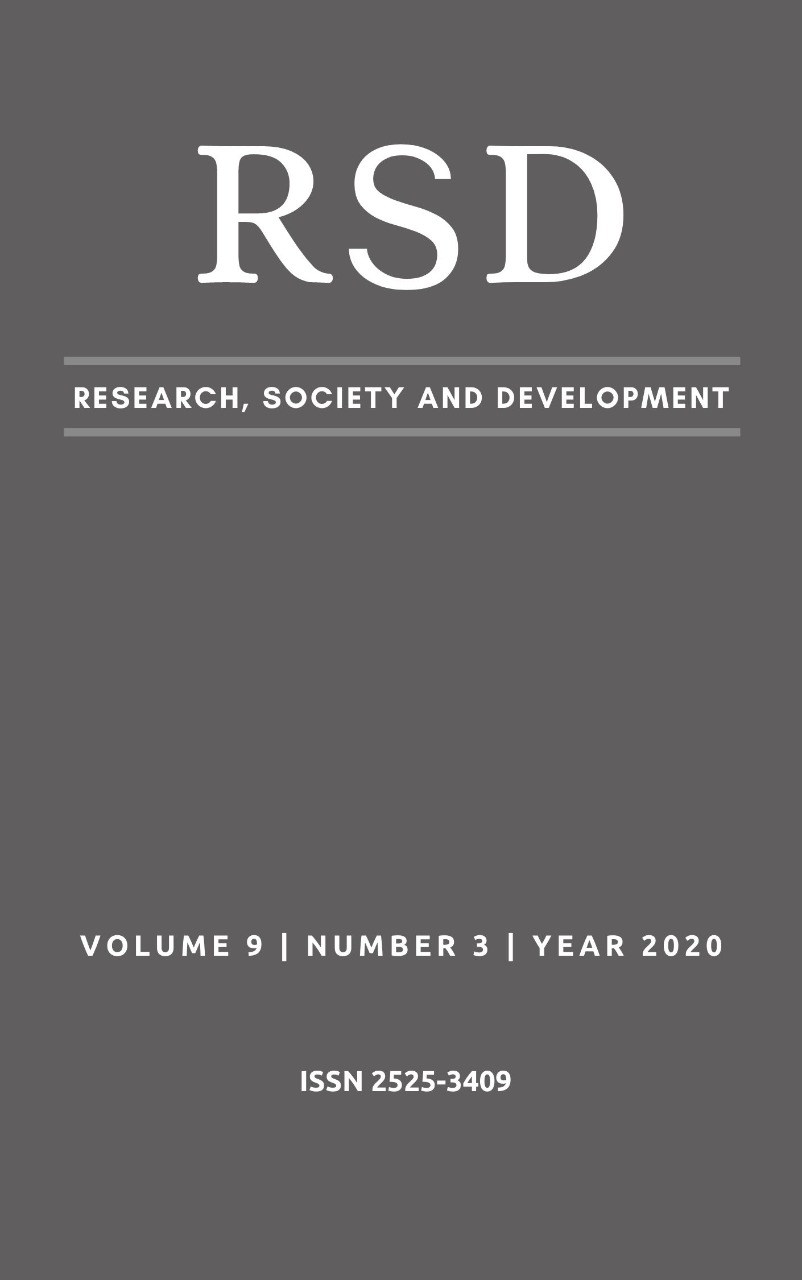Tabela periódica: uma proposta pedagógica para o ensino fundamental
DOI:
https://doi.org/10.33448/rsd-v9i3.2552Palavras-chave:
Ensino de Química, Recursos didáticos, História em quadrinhos.Resumo
O artigo apresenta uma proposta pedagógica envolvendo tabela periódica aplicada em turmas do nono ano do ensino fundamental, utilizando recursos didáticos variados com características lúdicas e que permitam uma participação ativa dos alunos, com o objetivo de facilitar a apresentação de conceitos abstratos e simbólicos da química, favorecendo sua compreensão por parte dos estudantes. A atividade foi desenvolvida em duas etapas, com a primeira empregando a técnica da memória estimulada para identificar os conhecimentos dos alunos sobre a presença de elementos químicos no seu cotidiano, envolvendo seus nomes, símbolos e estado físico, e a segunda apresentando a tabela periódica a partir do uso de história em quadrinhos e atividade de pesquisa. Envolveu um estudo de caso, tendo como forma de coleta de dados a gravação das aulas, a produção de material por parte dos alunos e o diário de aula da professora. As etapas foram bem aceitas pelos alunos, permitindo a socialização de ideias e conhecimentos, com a participação ativa das turmas.
Referências
André, M. E. D. A. (1984). Estudo de Caso: seu potencial na educação. Caderno de Pesquisa, 49, p. 51-54.
César, E. T.; Reis, R. C.; & Aliane, C. S. M. (2015). Tabela Periódica Interativa. Química Nova na Escola, 37(3), p. 180-186.
Creswell, J. W. (2010). Projeto de pesquisa: métodos qualitativo, quantitativo e misto. Porto Alegre: Artmed.
Falcão, D.; & Gilbert, J. (2005). Método da lembrança estimulada: uma ferramenta de investigação sobre aprendizagem em museus de ciências. História, Ciências e Saúde-Manguinhos, 12, (suplemento), p. 93-115.
Ferreira, L. H.; Correa, K. C. S.; & Dutra, J. L. (2016). Análise das estratégias de ensino utilizadas para o ensino da Tabela Periódica. Química Nova Escola, 38(4), p. 349-359.
Lüdke, M.; & André, M. E. D. A. (2017). Pesquisa em Educação: Abordagens Qualitativas. Rio de Janeiro: E.P.U.
Madeira, M. C. (2015). Situações em que a aula expositiva ganha eficácia. In: Congresso Nacional de Educação – PR, Curitiba: 2015.
Moraes, R. (2003). Uma Tempestade De Luz: A Compreensão Possibilitada Pela Análise Textual Discursiva. Ciência & Educação, 9 (2), p. 191-211.
Rocha, J. S.; & Vasconcelos, T. C. (2016). Dificuldades de aprendizagem no ensino de química: algumas reflexões. In: Encontro Nacional de Ensino de Química – SC, Florianópolis: 2016.
Santos, J. S.; Silva, A. da C. T.; & Oliveira, F. S. de. (2016). Histórias em Quadrinhos no ensino de Química: o que tem sido produzido em revistas e eventos da área na última década. In: Encontro Nacional de Ensino de Química – SC, Florianópolis: 2016.
Souza, A. G. L. de; & Cardoso, S. P. (2019). Ensino, aprendizagem e o ambiente escolar na abordagem de conceitos de química. Research, Society and Development, 8 (11), p. e038111426.
Zabalza, M. A. (2004). Diários de aula: um instrumento de pesquisa e desenvolvimento profissional. Porto Alegre: Artmed.
Downloads
Publicado
Edição
Seção
Licença
Autores que publicam nesta revista concordam com os seguintes termos:
1) Autores mantém os direitos autorais e concedem à revista o direito de primeira publicação, com o trabalho simultaneamente licenciado sob a Licença Creative Commons Attribution que permite o compartilhamento do trabalho com reconhecimento da autoria e publicação inicial nesta revista.
2) Autores têm autorização para assumir contratos adicionais separadamente, para distribuição não-exclusiva da versão do trabalho publicada nesta revista (ex.: publicar em repositório institucional ou como capítulo de livro), com reconhecimento de autoria e publicação inicial nesta revista.
3) Autores têm permissão e são estimulados a publicar e distribuir seu trabalho online (ex.: em repositórios institucionais ou na sua página pessoal) a qualquer ponto antes ou durante o processo editorial, já que isso pode gerar alterações produtivas, bem como aumentar o impacto e a citação do trabalho publicado.


